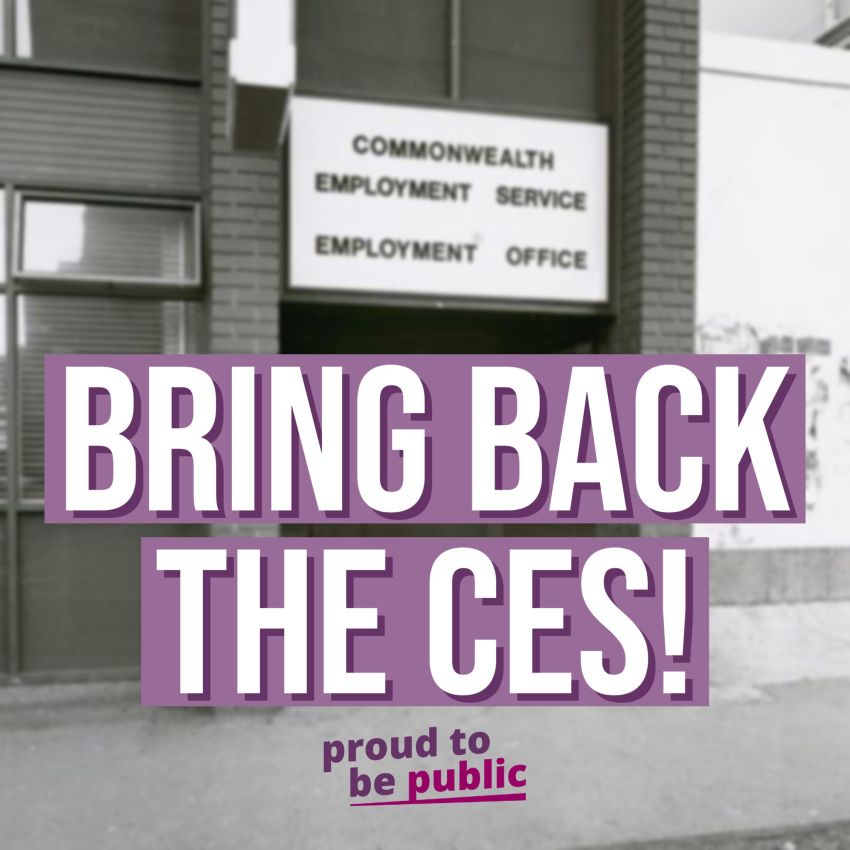
The Community and Public Sector Union (CPSU), representing federal and state public servants, has stepped up its campaign to restore the Commonwealth Employment Service (CES), which was abolished in 1998.
John Howard’s Coalition government outsourced the CES' work to private and charity organisations under the Job Network. Preparation for the outsourcing had begun under Paul Keating’s Labor government.
At the Bring Back the CES launch on June 15, CPSU national secretary Melissa Donnelly said that successive governments threw huge sums at employment service providers with little to show for it except “a toxic relationship with job seekers, wasted taxpayer money, limited support for local businesses wanting to hire new staff and huge profits for a handful of private providers who are failing to deliver”.
The CPSU said time is up for the “privatised, punitive and primarily for-profit employment services system”.
Donnelly said sourcing employment services through a modern, fit-for-purpose CES would be “beneficial” for the government, job seekers, employers and the public.
The CPSU argued in its submission to the Inquiry into Workforce Australia Employment Services that the welfare and job assistance system had become punitive and required a policy reset, The Mandarin reported on June 20.
The “mismatch” between the tenets of the welfare system and the realities of the modern labour market was on full display during the Robodebt debacle, the CPSU submission said. The Coalition government set out to catch “dole bludgers” but ended up ensnaring hundreds of thousands of people who were trying hard to get, or keep, paid work while moving in and out of casual work, or juggling multiple insecure jobs.
The current system places “a large, stressful and at times demeaning administrative burden on job seekers”, the CPSU said. “That burden is particularly unfair in a labour market where so many workers have to spend a lot of time and emotional energy chasing and juggling short-term casual work.”
The CES was established in 1946 as part of the John Curtin Labor government's commitment to full employment. It was designed to locate labour shortages and help people find jobs.
However, it also had a coercive element: it conducted a “work test” requiring welfare recipients to prove their willingness and ability to work.
“The old CES was not perfect, and there’s no going back to it. But in many respects, it was a vastly superior system to today’s privatised network of Employment Service Providers (ESPs),” wrote Jay Coonan, policy officer with the Australian Unemployed Workers Union, in Jacobin in 2020.
“Understanding its history can help us build a better welfare system that empowers unemployed workers,” Coonan said.
“Since the 1990s, Australian governments have developed welfare services designed to punish the unemployed. Although the label for these services has changed repeatedly, from ‘Job Network’ to ‘Job Services Australia’ and finally ‘Jobactive’, the main instruments of coercion are still Employment Service Providers.”
The privately-owned agencies do not find jobs for the unemployed and "don't produce anything or offer any useful services”, yet they still make billions, Coonan said.
“ESPs have one purpose: to enforce punitive social security laws. They make claiming an unemployment payment humiliating and difficult, and have power to suspend payments. The point is to make unemployed workers accept low-paid, insecure work.”
The CPSU-led “Bring Back the CES” campaign, under the banner of Proud to be Public, is calling on Labor to: suspend mutual obligations; end the use of for-profit employment services; rebuild a public sector-based employment service; explore a new modern CES model, complemented by specialist community-based services; and increase entry-level jobs within the Australian Public Service.
[Sign the Proud to be Public Petition.]